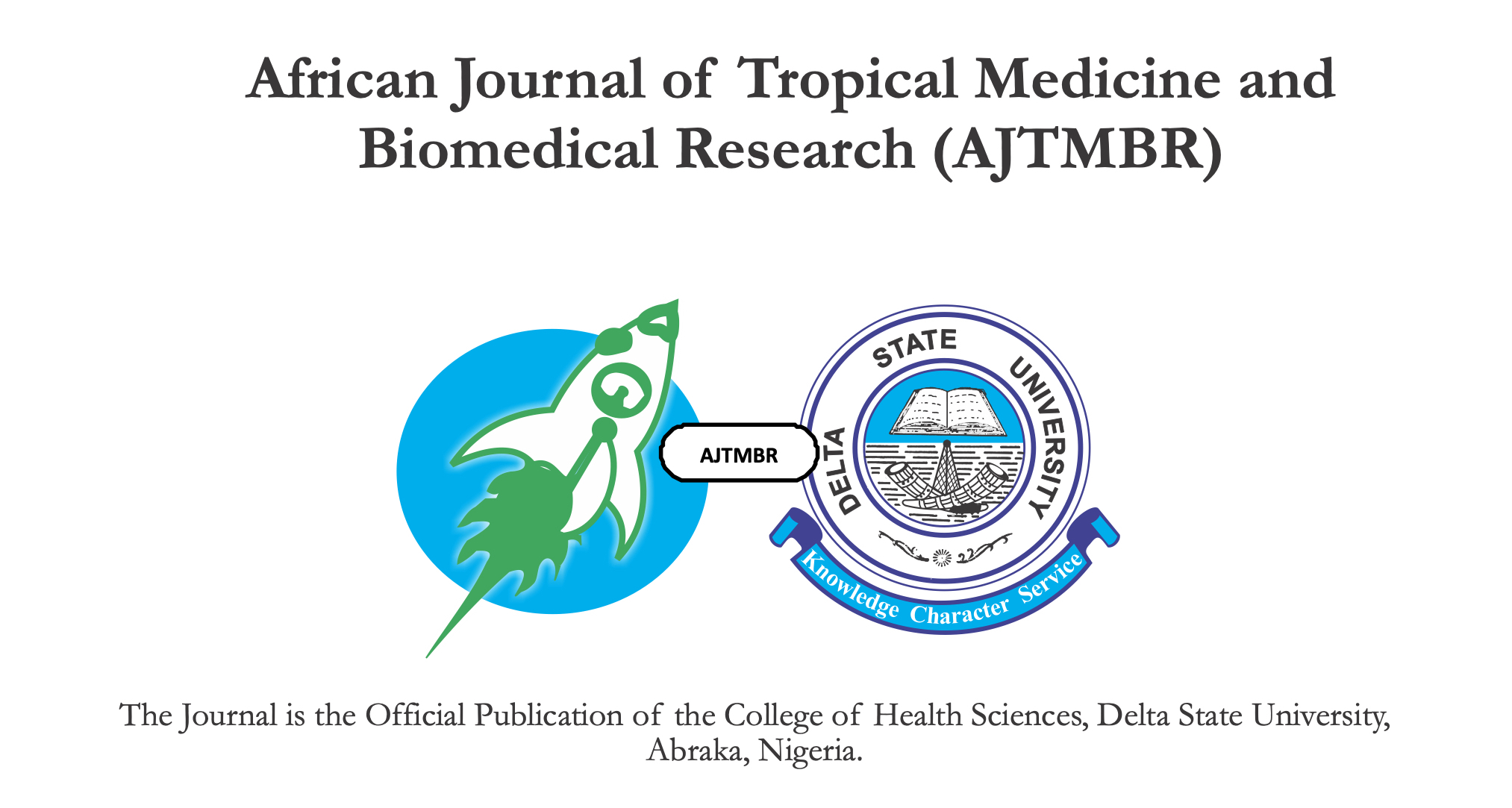Unilateral Renal Agenesis:
A Case Report
Abstract
Unilateral renal agenesis is the congenital absence of one kidney. The incidence ranges from 1:500 to 1:3200 with a slight male preponderence. The diagnosis is usually made as an incidental finding. Complications such as hypertention, proteinuria and renal impairemnt are commoner in this condition than in those with both kidneys, though majority will lead a normal life.
We present a four year old girl who presented with anarsaca and proteinuria and was found to have a solitary left kidney. She reponded to prednisolone but is currently on captopril and levamisol and has been asymptomatic for five years
References
Emmanuel B, Nachman R, Aronson N, Weis H. Congenital solitary kidney: A review of 74cases. Am J Dis Child. 1974; 127: 17-19
Parikh CR, McCall D, Engelman C, Schrier RW. Congenital renal agenesis: case-control analysis of birth characteristics. Am J Kidney Dis. 2002; 39: 689-694
Robson WM, Leug AC, Rogers RC. Unilateral renal agenesis. Advances in Pediatrics. 1995; 42: 575-591
Wiersman AF, Peterson LF, Justena EJ. Uterine anomalies associated with unilateral renal agenesis. Obstet Gynecol 1976; 47: 654-657
Li S, Qayuun A, Coakley FV, Hrick H. Association of renal agenesis and mullerian duct abnormalities. J Comput Assist Tomogr. 2000; 24: 829-834
Duncan PA, Shapiro LR, Stangel JJ et al. The MURCS association: Mullerian duct aplasia, renal aplasia and cervicothoracic somite dysplasia. J Pediatr 1979; 95: 399-402
McCallum TJ, Millunsky TM, Munarriz R, Carson R, Sadeghi-Nejaad H, Oates RD. Unilateral renal agenesis associated with congenital absence of vas diferens: phenotypical findindings and genetic Unilateral Renal Agenesis: A Case Report considerations. Human Reproduction 2001; 16(2): 283-288
Yalavrthy R, Parikh CR. Congenital renal agenesis. Saudi J Kidney Dis Transpl 2003; 14: 336-341
Temple JK, Shapira E. Genetic determinants of renal disease in neonates. Clin Perinatol. 1981; 8: 361-373
Woolf AS, Hillman KA. Unilateral renal agenesis and the congenital solitary functioning kidney: Developmental genetics and clinical perspectives. BJU Internatiomal 2006; 99: 17-21
Abe K, Honein MA, Moore CA. Maternal febrile illness, medication use, alcohol consumption and risk of congenital renal abnormalities. Birth Dfects Resp Part A. Clin Molecular Teratol. 2003; 67(11): 911-918
Nielson GL, Puho E, Rothman KJ, Sorensen HT, Czeizel AE. Risk of congenital abnormalities in offsprings of women withdiabetes. Diabetes Mwd 2005; 22(6): 693- 696
Moore LL, Singer MR, Bradlee ML, Rothman KJ, Milunsky A. A prospective study of risk of congenital defects associated with obesity and diabetes mellitus. Epidemiology 2009; 11: 689-694
BirthDefectsseries:TexasDevelopmentof State Health Services. Cited on Jnuary 1st 2011. Available at: http://www.dshs.state.tx.us/birthdefects/ris k/risk22-renal.shtm.
Hiraoka M, Tsukahara H, Oshima Y, Kasuga K, Ishihara Y, Mayumi M. Renal aplasia is the predominant cause of congenital solitary kidney. Kidney Int 2002; 61(5): 1840-1844
Renal agenesis Surveillance- United States. Cited on january 1st 2011 at: http://www.cdc.gov/mmwr/preview/mmw rhtml/0000130.htm
Maluf NS. On the enlargement of the normal congenitally solitary kidney. B J Urol. 1997; 79: 836-841
Hill LM, Nowak A, Hartle R, Tush B. Fetal compensatory renal hypertrophy with a unilateral functioning kidney. Ultrsound Obstet Gynecol. 2000; 15: 191-193
Sharp DA, Rose JH. Attitude of Pediatrc urologists regarding sports participation by children with solitary kidney. Journal of Urology 2002; 168(4): 1811-1815
Karen Psooy. Sports and solitary kidney: what parents with a young child with a solitary kidney should know. Canadian Urol Assoc J 2009; 3 (1): 67-68
Grinsell MM et al. Single kidney and sports participation: Perception versus reality. Pediatr 2006; 118: 1019-1027
Argueso LR, Ritcyey ML, Boyle ET Jnr, Milliner DS, Bergstraih EJ, Kramer SA. Prognosis of patients with unilateral renal agenesis. Pediatr Nphrol. 1992; 6 : 412-416
Gonzalez E, Gutierrez E, Morales et al. Factors influencing the progression of renal damage in patients with unilateral renal agenesis and remnant kidney. Kidney Int. 2005; 68: 263-270
Valentini RP, Langenburg S, Imam A, Matto IK, Zerin JM. MRI Detection of atrophic kidney in a hypertensive child with single kidney. Pediatr Nephrol 2005; 20(8): 1192- 1194

Downloads
Published
Issue
Section
License

This work is licensed under a Creative Commons Attribution-NoDerivatives 4.0 International License.
Key Terms:
- Attribution: You must give appropriate credit to the original creator.
- NonCommercial: You may not use the material for commercial purposes.
- ShareAlike: If you remix, transform, or build upon the material, you must distribute your contributions under the same license as the original.
- No additional restrictions: You may not apply legal terms or technological measures that legally restrict others from doing anything the license permits.
For full details, please review the Complete License Terms.



